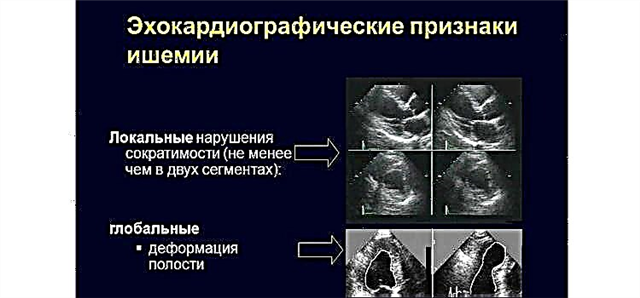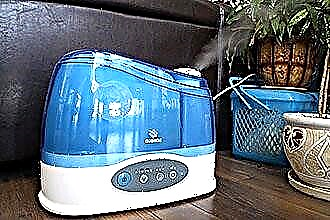It is useful for all parents to know what stenosis of the larynx is, because pathology often concerns childhood. In order to know how to help a child and cure a disease, you need to understand where it comes from and how it manifests itself. It is important to understand that stenosis can develop very quickly, requiring immediate assistance.
 Treatment of laryngeal stenosis in children is a difficult task, but it must be dealt with without complications.
Treatment of laryngeal stenosis in children is a difficult task, but it must be dealt with without complications.
In most cases, children encounter the problem of stenosis of the upper respiratory tract in the autumn-spring period, therefore it is at this time that parents need to strengthen prevention and take care of the child's health with special attention.
Why is stenosis so dangerous? The fact is that due to the narrowing of the airways, it is difficult for oxygen to enter the lungs and, accordingly, into the bloodstream and to the internal organs. The brain is especially sensitive to oxygen starvation.
Hypoxia, or otherwise a lack of oxygen, leads to a disruption in the functioning of the central nervous system, on which the child's consciousness, heart function and breathing depend. Hypoxia for 5 minutes leads to irreversible changes in the structures of the brain, which ends in death.
Note that the younger the child's age, the higher the risk of suffocation due to laryngeal stenosis. Why is that? In children:
- in the larynx zone there are a large number of sensitive receptors that quickly respond to the action of provoking factors. As a result, laryngospasm is observed;
- The larynx resembles a funnel in shape (in adults - a cylinder) - do you feel the difference?
- many glands are concentrated here, which increases the risk of inflammation and edema;
- the vocal cords are covered with a thin epithelium, which predisposes it to mild trauma;
- the surrounding tissue is loose and has a good blood network, as a result of which even the slightest inflammation can lead to severe tissue swelling.
In terms of development time and course, stenosis can proceed as an acute or chronic process. In terms of hypoxia, the most dangerous is the acute form, because the organs do not have time to adapt and compensatory reactions do not work. If chronic narrowing of the larynx develops, the body gradually gets used to insufficient oxygen supply and suffers from hypoxia to a lesser extent.
Why stenosis develops
The most common cause of laryngeal stenosis is viral infection and reproduction of pathogenic microorganisms, but the influence of other predisposing factors should not be underestimated. So when can the airways narrow?
- with damage to the larynx as a complication of the underlying disease, for example, phlegmonous laryngitis;
- when a child is infected with viruses or bacteria with the development of influenza, scarlet fever or diphtheria;
- in case of a congenital anomaly of the larynx (genetic mutations);
- after contact with an allergen, when allergic edema develops;
- if a child inhales a foreign element or tissue damage during surgery or hot liquid;
- with a violation of innervation and changes in the muscles.
How does laryngeal stenosis manifest?
It is important for parents to remember that the first signs of narrowing of the larynx are similar to those of a cold, which complicates the initial diagnosis. Children usually have a runny nose, cough, sore throat, and fever.
Parents should be alerted by the appearance of a "barking" cough in the form of seizures and a hoarse voice. If you notice these signs, you need to immediately start intensive treatment.
Not paying attention to the deterioration of the child's condition, breathing becomes difficult, the cough worsens, which indicates a narrowing of the larynx.
Laryngeal stenosis most often develops in children 2-5 years old.
How can you tell if your child has a narrowing airway?
| Narrowing degree | General state | Breath | Pulse | Skin |
|---|---|---|---|---|
| 1 (compensation) | Moderate severity, intermittent agitation | Accelerated. Shortness of breath - with significant physical exertion | Without changes | Virtually unchanged |
| 2 (subcompensation) | Excitement, moodiness | Inhalation is lengthened, breathing is rapid, shortness of breath - with little exercise | Accelerated | Blueness of lips, ears, fingertips |
| 3 (decompensation) | Severe condition, lethargy | Noisy breathing, inhalation is lengthened, intercostal spaces are drawn in. The child suffocates while lying down. | Even more frequent | A bluish tint extends to the limbs, face |
| 4 (asphyxiation) | Extremely severe, lack of consciousness | Shallow breathing, irregular | Rare, poorly felt | Earthy shade |
Diagnostics
When a child begins to choke with an acute narrowing of the airways, there is no time for diagnosis. Doctors briefly interview parents about the condition of the child on the eve of suffocation and his illnesses. Once emergency care has been provided and oxygen is available, diagnosis can begin. It helps to identify the cause of a serious condition and prescribe an effective treatment.
 After carefully questioning the parents, the doctor determines which additional methods will allow him to quickly and accurately diagnose. For this can be used:
After carefully questioning the parents, the doctor determines which additional methods will allow him to quickly and accurately diagnose. For this can be used:
- laryngoscopy, which makes it possible to assess the degree of narrowing, detect a tumor, edema or foreign elements in the larynx;
- fibrolaryngoscopy refers to endoscopic techniques that are performed with a flexible endoscope. The examination results are displayed on the screen;
- chest x-ray - to exclude diseases of the lungs and heart;
- electrocardiography to rule out dyspnea of cardiac origin;
- ultrasound examination of the thyroid gland;
- bacteriological analysis with inoculation of material from the oropharynx;
- magnetic resonance imaging, computed tomography and biopsy are performed in extreme cases when a diagnosis cannot be made.
During the diagnosis, the doctor needs to differentiate between false, true croup, tumor, diseases of the bronchopulmonary system (bronchial asthma) and traumatic injury.
First aid
So, what to do when a child has a paroxysmal cough, severe shortness of breath and a hoarse voice. It is important for parents to stay calm! The first step is to call an ambulance without waiting for the child to choke. Then:
- calm the child down, pick up, rock, stroke, distract - in general, do everything to stop crying, hysterics and restore breathing;
- open a window or balcony for a few minutes to let oxygen into the room, facilitate breathing and saturation of internal organs with oxygen;
- humidify the air in the room with a special humidifier or by hanging wet sheets in the room. By the way, parents should not forget about regular wet cleaning and humidification of the air in the children's room;
- with a fever above 38 degrees, antipyretic drugs, for example, Nurofen, Panadol or Efferalgan, should be given. This will help keep the baby hydrated and reduce shortness of breath.
Antipyretic drugs, which include acetylsalicylic acid, are prohibited for laryngospasm.
- antihistamines (Cetrin, Tavegil, Erius, Suprastin) reduce tissue edema and make breathing easier;
- inhalation with hormonal bronchodilators. They are widely used for bronchial asthma, severe obstructive bronchitis and allergic bronchospasm. They work to reduce inflammation and swelling.
 Parents definitely need to have a hormonal drug for inhalation, because this is the most powerful medicine in the fight against respiratory tract spasm. The most common Pulmicort with the active ingredient is Budesonide. It comes in the form of a suspension in 2 ml vials and is ready to use. It is used for emergency nebulizers. For the procedure, only a compressor device is used, because ultrasonic is not suitable. After the session, you need to rinse your mouth or wash your face if inhalation was carried out through a mask. After opening the bottle, it can be stored for only 12 hours in a dark place. Shake the bottle before using the rest of the suspension.
Parents definitely need to have a hormonal drug for inhalation, because this is the most powerful medicine in the fight against respiratory tract spasm. The most common Pulmicort with the active ingredient is Budesonide. It comes in the form of a suspension in 2 ml vials and is ready to use. It is used for emergency nebulizers. For the procedure, only a compressor device is used, because ultrasonic is not suitable. After the session, you need to rinse your mouth or wash your face if inhalation was carried out through a mask. After opening the bottle, it can be stored for only 12 hours in a dark place. Shake the bottle before using the rest of the suspension.
The listed therapeutic measures will help with spasms of an infectious or allergic nature. If the narrowing of the airways is due to trauma, the effect of the drugs will be much less. In this case, the issue is decided on surgical intervention.
Treatment
It is necessary to start treating stenosis of the larynx after identifying the cause of its development. It depends on what to appoint and what course. Of the drugs used in treatment:
- antibacterial agents (Sumamed, Amoxiclav) - 7-10 days. They are prescribed only upon confirmation of bacterial infection using the results of bacterial culture and antibioticogram;
- probiotics are taken in parallel or after antibiotic therapy to restore flora. For children, Biogaya, Bifiform Baby, Atzilakt, Bifidumbacterin are allowed;
- antihistamines (Suprastin, Loratadin) help to cope with tissue edema;
- nasal drops with a vasoconstrictor effect (Nazivin, Otrivin) - reduce the lumen of blood vessels, mucosal edema and mucus production, which facilitates nasal breathing;
- hormonal preparations for inhalation (Pulmicort) - in severe cases.
As we have examined, stenosis of the larynx develops more often against the background of a viral infection, therefore, in most cases, antiviral agents are prescribed. They can be used in several ways:
- inhalation. With the help of an inhaler, you can use Interferon, which has an immunostimulating effect and fights viruses;
- orally in the form of tablets (Amiksin), drops (Aflubin) or powder (Otsilokoktsinum);
- intranasally (nasal drops Nazoferon).
Do not forget about the fight against coughs. Mucolytic and expectorant medications are necessary to reduce the viscosity of phlegm and improve its excretion. For children can be used:
- oral solutions (Erespal, Ascoril, Ambroxol, Fluditek);
- solutions for inhalation (Ambrobene, Lazolvan, Acetylcysteine);
- tablets (Mukaltin, Bromhexin).
In addition, it is useful to inhale with alkaline mineral (still) water. This allows the phlegm to "dissolve" and it is easier to remove it outside.
Particular attention should be paid to the general regimen of the child. Parents need:
- increase drinking at the expense of alkaline still water, warm milk with soda, tea and compotes. This will help reduce hyperthermia, sputum viscosity and replenish fluid losses in the body, preventing dehydration;
- monitor compliance with bed rest;
- in the diet to increase the amount of vitamin products, spicy, hot, salty foods, solid foods and carbonated drinks are prohibited;
- regularly carry out wet cleaning, ventilate the room;
- humidify the air in the nursery;
- reduce the impact of stress;
- monitor compliance with vocal rest. During treatment, you do not need to talk loudly, shout and laugh hard, so as not to provoke laryngospasm.
When subcompensated laryngeal stenosis is diagnosed in children, treatment should be carried out in a hospital setting. In addition to these drugs, doctors may prescribe oxygen therapy, hormonal drugs for intramuscular use, and sedatives.
If there is a threat of suffocation, a tracheostomy is performed with the continuation of drug treatment.
With an allergic spasm, it is required to identify the provoking allergen and eliminate it, otherwise the treatment may be ineffective.
Prophylaxis
To protect children from laryngeal stenosis, it is necessary to detect pathology in time and take measures to treat the underlying disease. To completely avoid the threat of asphyxiation and resist infections, it is recommended:
- observe personal hygiene;
- visit your dentist regularly for caries treatment;
- sanitize chronic foci of infection with tonsillitis or pyelonephritis;
- timely treat infectious diseases without waiting for complications;
- eat right (fruits, fresh vegetables, cereals). It is advisable to minimize the amount of preservatives, food additives and croutons used;
- drink enough fluids per day (tea, compote, water);
- harden the body;
- take a walk in the fresh air every day;
- avoid contact with people with infectious pathology;
- do not visit crowded places during periods of flu epidemics;
- do not abuse cold drinks and ice cream;
- do not give up breastfeeding, because with milk, the immune components necessary for building their immunity are supplied to children.
If a child is prone to frequent allergies, you need to consult with an allergist and immunologist to find out the reasons. The resistance of the body's immune defense against infection depends on this.

 Parents definitely need to have a hormonal drug for inhalation, because this is the most powerful medicine in the fight against respiratory tract spasm. The most common Pulmicort with the active ingredient is Budesonide. It comes in the form of a suspension in 2 ml vials and is ready to use. It is used for emergency nebulizers. For the procedure, only a compressor device is used, because ultrasonic is not suitable. After the session, you need to rinse your mouth or wash your face if inhalation was carried out through a mask. After opening the bottle, it can be stored for only 12 hours in a dark place. Shake the bottle before using the rest of the suspension.
Parents definitely need to have a hormonal drug for inhalation, because this is the most powerful medicine in the fight against respiratory tract spasm. The most common Pulmicort with the active ingredient is Budesonide. It comes in the form of a suspension in 2 ml vials and is ready to use. It is used for emergency nebulizers. For the procedure, only a compressor device is used, because ultrasonic is not suitable. After the session, you need to rinse your mouth or wash your face if inhalation was carried out through a mask. After opening the bottle, it can be stored for only 12 hours in a dark place. Shake the bottle before using the rest of the suspension.

